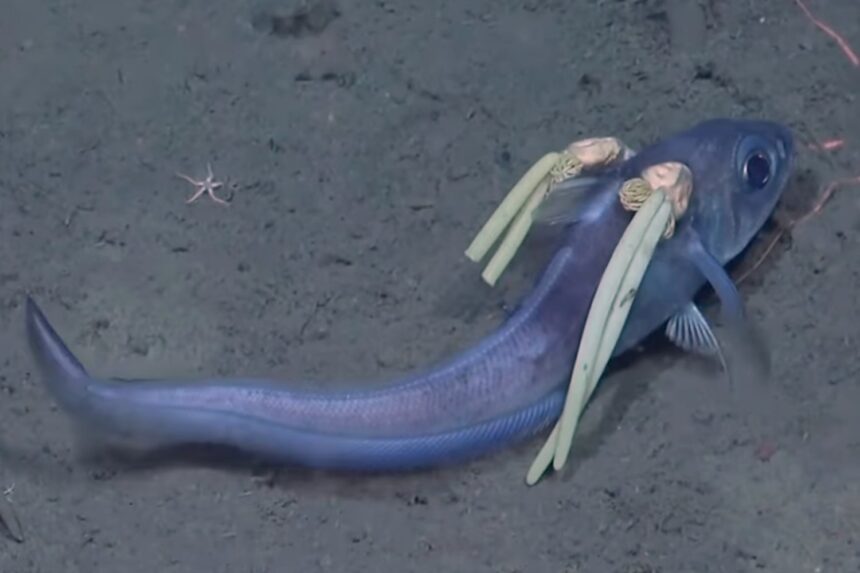Behold, the latest in deep-sea fashion: An unfortunate fish sporting parasitic copepods as pigtails.
An international team of scientists affiliated with the Schmidt Ocean Institute and the Woods Hole Oceanographic Institute spotted the critters during a recent expedition to the South Sandwich Islands, in a remote stretch of the Atlantic Ocean off the coasts of South America and Antarctica.
In haunting footage captured about 1,604 feet (489 meters) under the sea, cameras captured the tubular crustaceans latched onto the fish’s back. Though the parasites’ presence might trigger your gag reflex, they’re actually a sign that the underwater ecosystem is functioning just the way it should.
“Diverse, functioning, healthy ecosystems actually have a higher diversity and abundance of parasites,” said Lauren Dykman, a benthic ecologist, in an earlier Woods Hole article on the creatures.
The expedition spotted the parasite-ridden fish by chance, as part of a mission focused on cataloguing biodiversity in the deep ocean and spotting geohazards such as underwater landslides or hydrothermal activity.
A Schmidt Ocean Institute release noted that parasites keep the ecosystem population in check, regulate the food web, and increase the ocean’s biodiversity.
But the researchers also have their eyes on a bigger prize: investigating the Antarctic Circumpolar Current—the oceanic flow that encircles Antarctica—and its role in shaping habitats such as that inhabited by this grenadier fish and its copepods. The ocean current acts like a watery boundary wall, creating temperature differences that influence where animals live, migrate, and reproduce. Scientists suspect it could be acting as a biogeographic border, separating ecosystems and driving unique adaptations on either side.
With so little known about this isolated part of the deep sea, every slimy copepod and wriggly fish becomes a clue into how biodiversity changes across underwater borders.
The South Sandwich Islands expedition is one of many projects contributing to the growing realization that such remote ecosystems—parasites and all—are full of surprises and essential to understanding our planet’s past, its current changes, and how it might look in the future. The parasites topping this fish are more than a hair-do—they’re an indicator of a thriving ecosystem, shaped by the unique conditions of the deep sea.
Read the full article here












